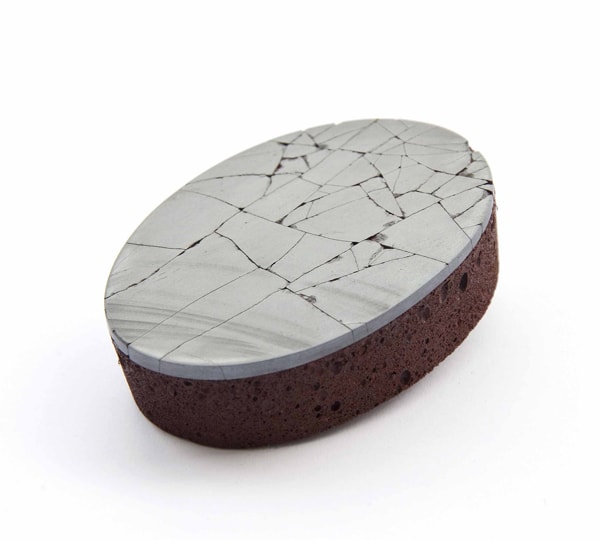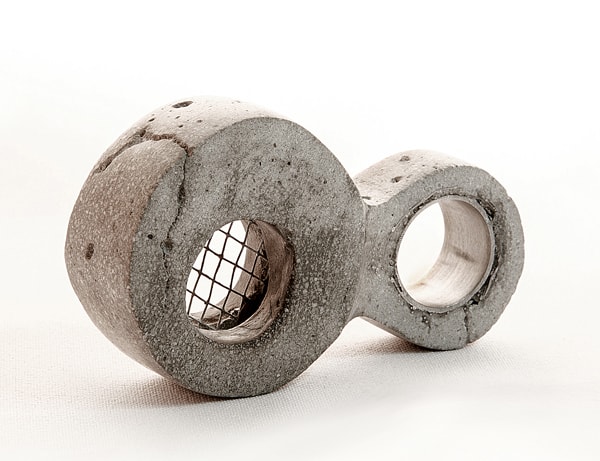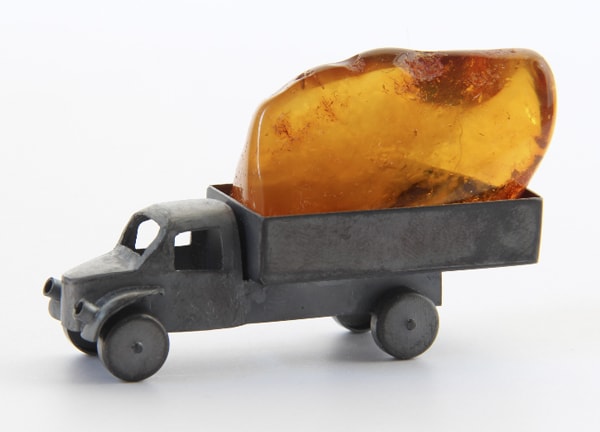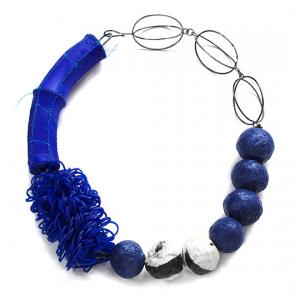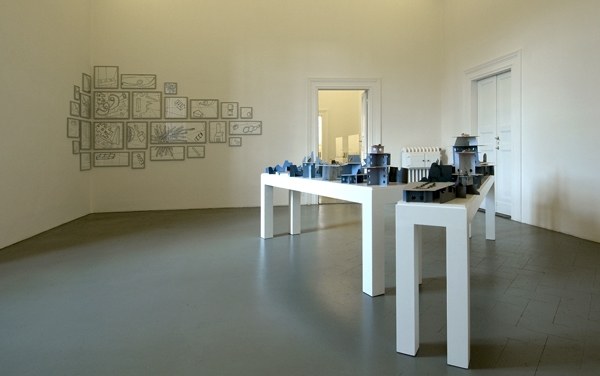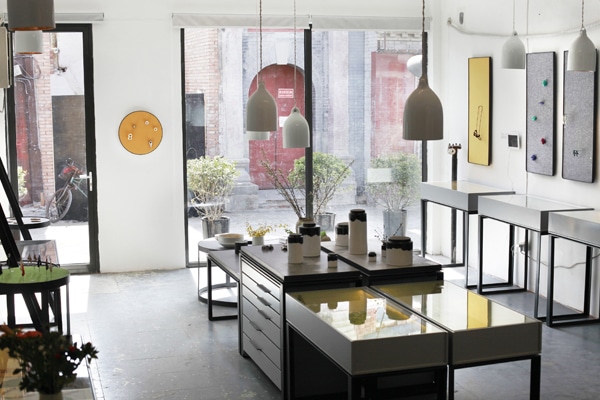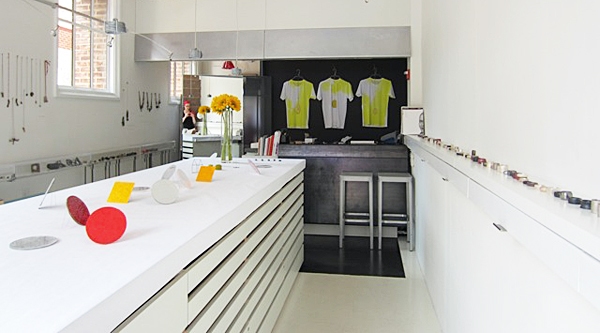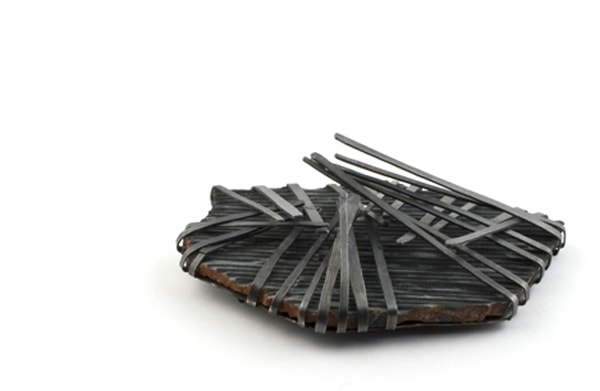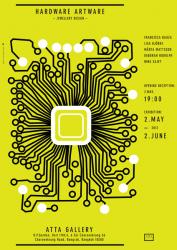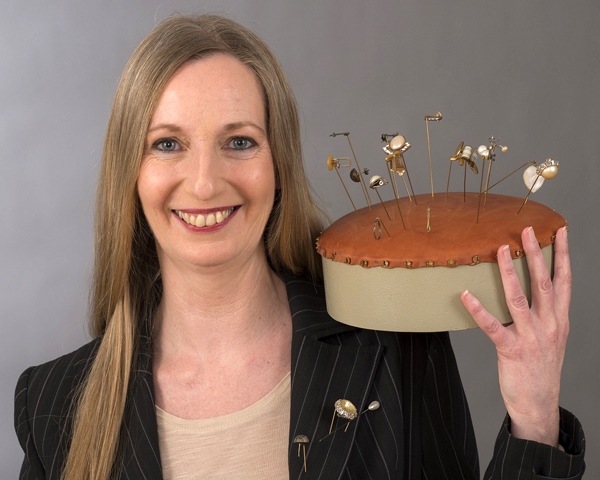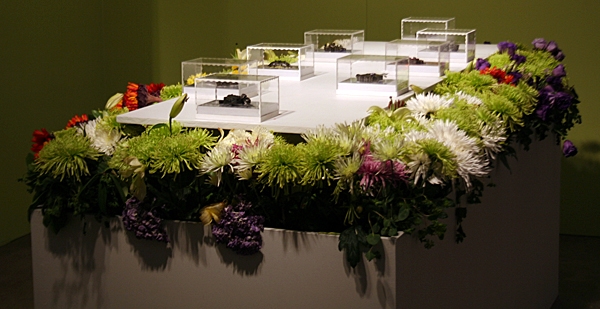Vander A is a young gallery located in the university area of Brussels, Belgium. Françoise Vanderauwera prefers to showcase artists who have an appealing visual language, who utilize state-of-the-art jewelry techniques, and employ diverse experimental materials that format their own vision to express key issues. Vander A is also one of the few galleries welcoming student work and young talent alongside more established artists.
Kellie Riggs: Can you talk a bit about the opening of your gallery and how it came to be? Where and when did your interest in contemporary jewelry begin?
Françoise Vanderauwera: After political sciences studies, I managed the European information center of a big international law firm where I further developed my critical mind and learned how to monitor and to pass on legal and strategic information. Meanwhile, there was a design shop in Brussels that I used to love to visit. When this shop closed, the empty space provoked me to start looking at designers myself. (My father, an architect, transferred his interest and curiosity for design to me.) Then, through surfing the Internet, travelling, and searching, I discovered jewelry designers and was amazed to see how some of them were so clever. They could see and express what really happens in this world much better than me despite the best intelligence techniques I was using.
How long have you had your gallery? And how old were you when you opened?
Françoise Vanderauwera: I opened the gallery in November 2011, after five years of investigations and preparations in a totally new business domain for me, with exception of design. I was 47.
As a newer gallery, would you say you are doing things a little differently than the other galleries?
Françoise Vanderauwera: Yes, I am still not influenced by any obligation. I represent artists of my own choice. Compared to what already exists, I pay attention to representing a significant proportion of Belgian artists or artists living and working in Belgium and not just international “stars.” I am also in favor of showing something different, the new generation.
Do you get a lot of street traffic, or are you more of a destination gallery where people come knowing what to expect?
Françoise Vanderauwera: The gallery is not visible from the street. I am more of a destination gallery but with a larger dedicated space. It’s on the first floor, at the back of a modern building with a courtyard. Visitors come by invitation only.
Tell me a bit about how you began to collect your represented artists. What do you look for, and has it changed over time?
Françoise Vanderauwera: I first asked Patrick Marchal and Hilde De Decker. Great Belgian artists. Both “free minded” and so contemporary! Patrick is a committed artist. The role of the artist is sometimes to participate in social and/or political critique. This is very important to me. I like showing artists who aren’t concerned about smoothing out their artistic style.
As a gallerist, I pay attention to keeping the visitors informed about what is coming up with fairs, collectives, new group of artists, contemporary forms, and practices of writing (such as biomorphism), and the history of knowledge transfer in Belgian contemporary art jewelry. These kinds of exhibitions are clearly addressed to a public not used to contemporary art jewelry. This is probably because, I think as a gallery, I have a role to play.
I also understand that you like to represent student work or highlight certain academic programs. For example, right now you have an exhibition including work from the Institut d’enseignement des Arts, Techniques, Sciences et Artisanats (IATA, Naamur, Belgium), The Ecole nationale supérieure des arts visuels of La Cambre (Brussels, Belgium), and St. Lucas University College of Art & Design (Antwerp, Belgium). How did this relationship begin?
Françoise Vanderauwera: Yes. In addition to confirmed artists (with masters degrees) it is extremely interesting to show research, development, and experiences done by students during the academic year. They are the foundations of the future. It helps to project what could be next. It is also a place to find unformatted artists, the premier cru (first growth) of artwork under the precious flow of knowledge transfer.
This relation with students and schools began with my own curiosity, but I mainly show confirmed young artists, artists already away from school who have developed their own artistic writing. It is important to support artists who are not already supported everywhere else. It is much more risky, but they need that. They work without nets, and so do I.
So you create the student shows mainly for your own interest. Do you happen to have a collector base interested in buying their works?
Françoise Vanderauwera: I do it to encourage great artists. It’s also partially within my current educational program addressed to novice amateurs and potential collectors.
Your past exhibitions have varied quite a bit from one another. For example, you’ve had solo shows, small group shows, this current academic show, and shows where you’ve invited outside collectives to exhibit work. Last year the 1×1 Collective from Florence, Italy, organized something with you. Do you have a particular strategy in trying out these different formats?
Françoise Vanderauwera: All of these formats reflect what is going on in contemporary art jewelry. Jewelers are looking for different ways to promote their work: as a collective, as a group, and as a project. I think, as a contemporary art gallery, I have to show this reality. There are other formats I could also support.
At this point, do you have a preference as to the types of shows you like to assemble?
Françoise Vanderauwera: No, certainly not. I am very open to any type of show. The combination of jewelry and dance in and outside the gallery with the famous choreographer Lise Vachon nearly one year ago was a wonderful experience. (See the Oracular video.) The gallery is big and may welcome any type of show.
What have you learned about the field that, perhaps, came as a surprise after opening the gallery; any particular lessons?
Françoise Vanderauwera: Very few know about this young art. We are in a period where we still have to explain what contemporary art jewelry is. I didn’t know it was so obscure to many people. Let’s imagine a gallery for paintings who mainly explains what is painting and less the painter. It is a big interesting challenge, but I would love go into high gear.
Thank you.
